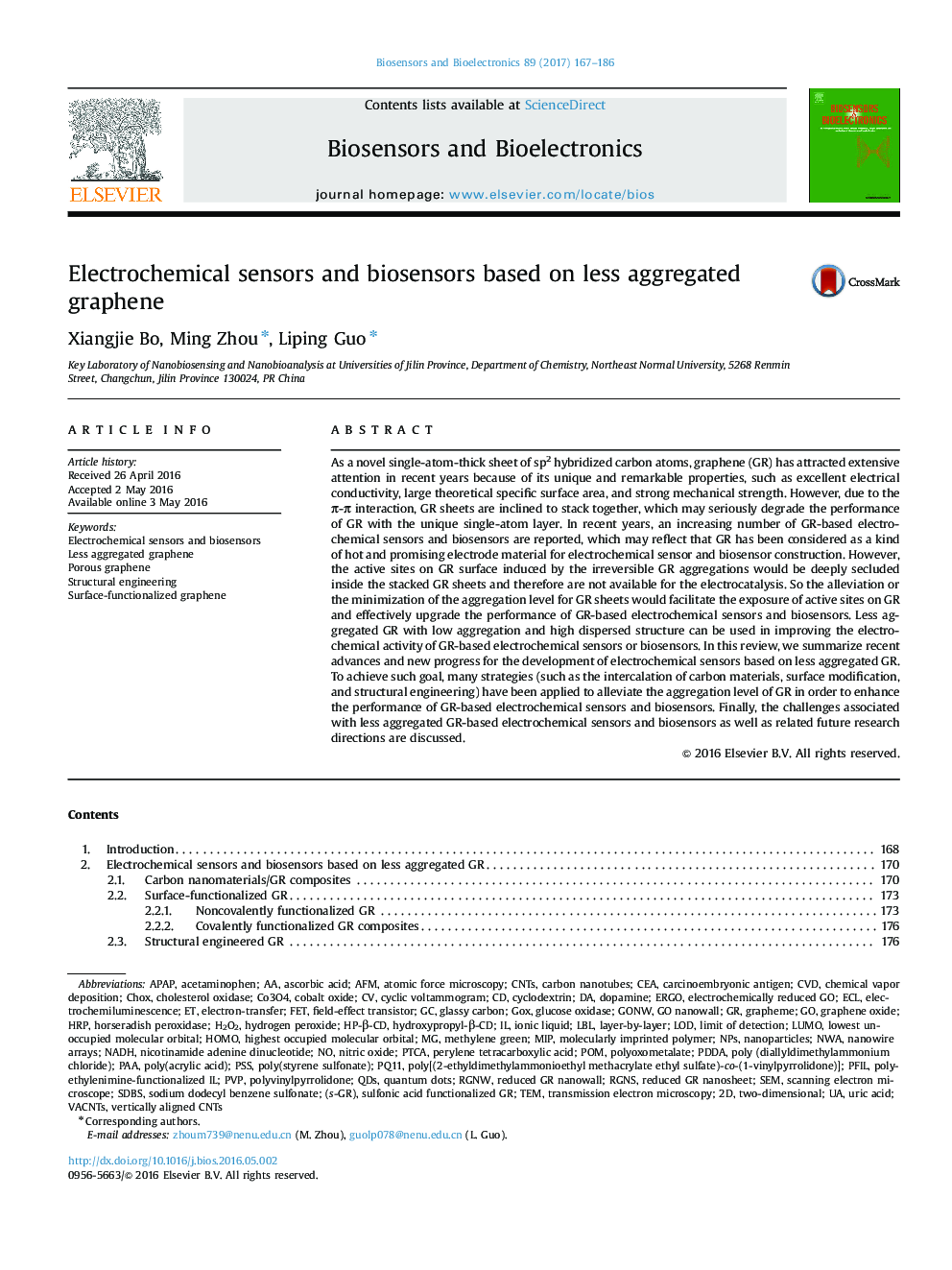| Article ID | Journal | Published Year | Pages | File Type |
|---|---|---|---|---|
| 5031678 | Biosensors and Bioelectronics | 2017 | 20 Pages |
Abstract
As a novel single-atom-thick sheet of sp2 hybridized carbon atoms, graphene (GR) has attracted extensive attention in recent years because of its unique and remarkable properties, such as excellent electrical conductivity, large theoretical specific surface area, and strong mechanical strength. However, due to the Ï-Ï interaction, GR sheets are inclined to stack together, which may seriously degrade the performance of GR with the unique single-atom layer. In recent years, an increasing number of GR-based electrochemical sensors and biosensors are reported, which may reflect that GR has been considered as a kind of hot and promising electrode material for electrochemical sensor and biosensor construction. However, the active sites on GR surface induced by the irreversible GR aggregations would be deeply secluded inside the stacked GR sheets and therefore are not available for the electrocatalysis. So the alleviation or the minimization of the aggregation level for GR sheets would facilitate the exposure of active sites on GR and effectively upgrade the performance of GR-based electrochemical sensors and biosensors. Less aggregated GR with low aggregation and high dispersed structure can be used in improving the electrochemical activity of GR-based electrochemical sensors or biosensors. In this review, we summarize recent advances and new progress for the development of electrochemical sensors based on less aggregated GR. To achieve such goal, many strategies (such as the intercalation of carbon materials, surface modification, and structural engineering) have been applied to alleviate the aggregation level of GR in order to enhance the performance of GR-based electrochemical sensors and biosensors. Finally, the challenges associated with less aggregated GR-based electrochemical sensors and biosensors as well as related future research directions are discussed.
Keywords
QDsCNTSPVPMIPPSSPOMPAAHRPLbLFETECLAFMAPAPNWAPTCAHP-β-CDSDBShydroxypropyl-β-CDChOxPDDAPoly (diallyldimethylammonium chloride)CeANPsHydrogen peroxideNanowire arraysAscorbic acidcarcinoembryonic antigenGlucose oxidaseAcetaminophenUric acidElectron-transferElectrochemiluminescenceHomoCobalt oxideCo3O4Graphene oxideTemhighest occupied molecular orbitalGoxErGOField-effect transistorLOD یا Limit of detectiontwo-dimensionalDopamineChemical vapor depositionCVDMethylene greenSodium dodecyl benzene sulfonateCyclodextrinLayer-by-layerLUMOIonic liquidlimit of detectionSEMStructural engineeringscanning electron microscopeTransmission electron microscopyatomic force microscopyNADHNanoparticlesCarbon nanotubesquantum dotsNitric oxideNAD, nicotinamide adenine dinucleotideH2O2Cyclic voltammogramHorseradish peroxidasePoly(styrene sulfonate)poly(acrylic acid)PolyoxometalatepolyvinylpyrrolidoneMolecularly imprinted polymerGlassy carboncholesterol oxidaseLowest Unoccupied Molecular OrbitalPorous grapheneGrapheme
Related Topics
Physical Sciences and Engineering
Chemistry
Analytical Chemistry
Authors
Xiangjie Bo, Ming Zhou, Liping Guo,
